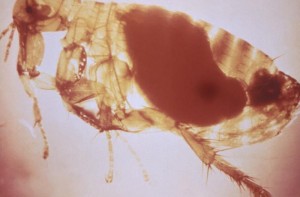For the second time in a month, San Juan Basin Health (SJBH) is reporting a human case of plague in a La Plata County resident. The patient is currently being treated for septicemic plague. The source of the infection is under investigation.

This is the sixth human case of plague reported in Colorado in 2014.
Septicemic plague is one of the three forms of plague. This form is contracted from a flea or rodent bite. Sometimes it appears subsequent to untreated bubonic or pneumonic plague. It involves bloodstream dissemination to all areas of the body. Buboes do not occur. Symptoms are endotoxic shock and disseminated intravascular coagulation. Untreated septicemic plague is nearly always fatal.
Other forms of human plague are bubonic and pneumonic.
Plague is an infectious disease caused by the bacterium, Yersinia pestis. It is found in animals throughout the world, most commonly rats but other rodents like ground squirrels, prairie dogs, chipmunks, rabbits and voles. Fleas typically serve as the vector of plague. Human cases have been linked to the domestic cats and dogs that brought infected fleas into the house.
People can also get infected through direct contact with an infected animal, through inhalation and in the case of pneumonic plague, person to person.
Yersinia pestis is treatable with antibiotics if started early enough.


One thought on “Colorado: La Plata County reports 2nd plague case this year, this one is septicemic”